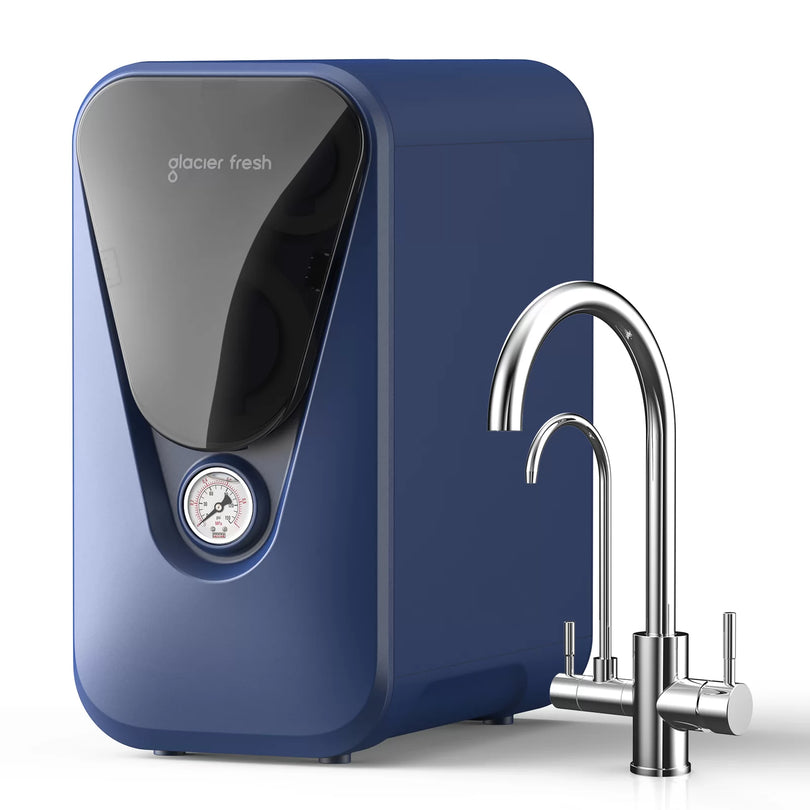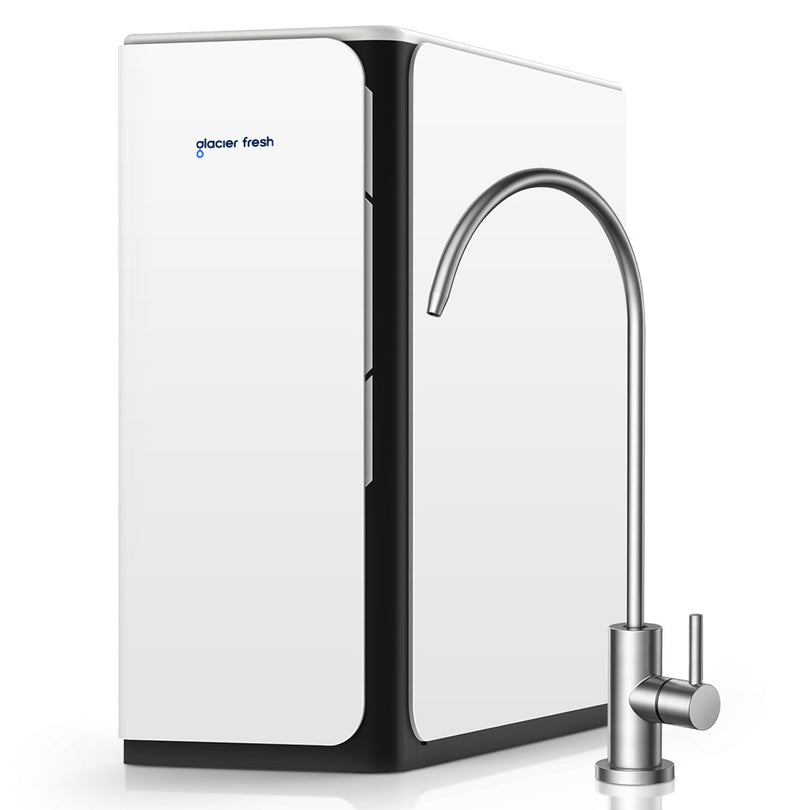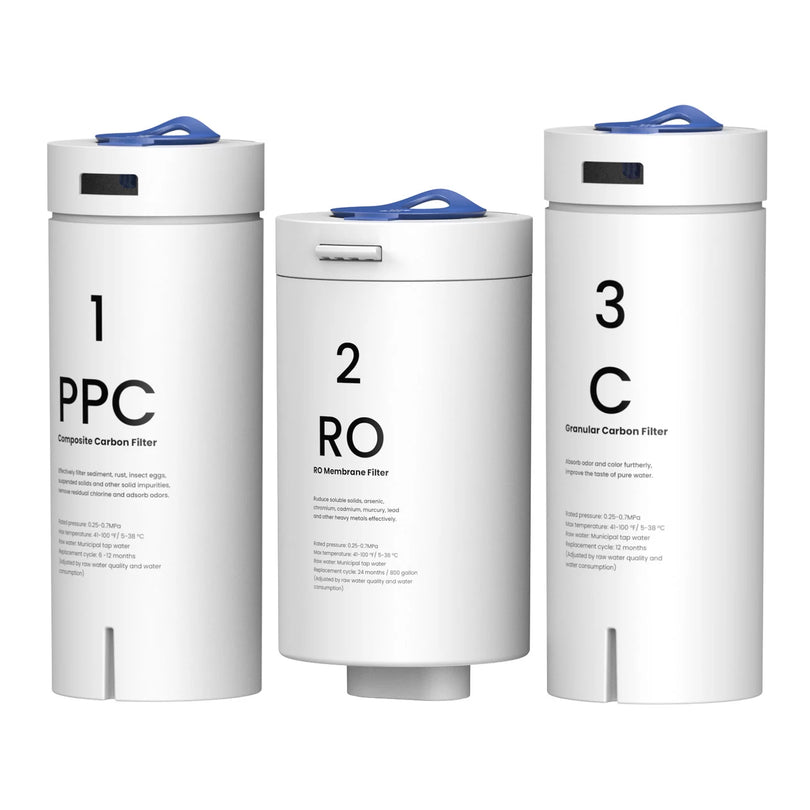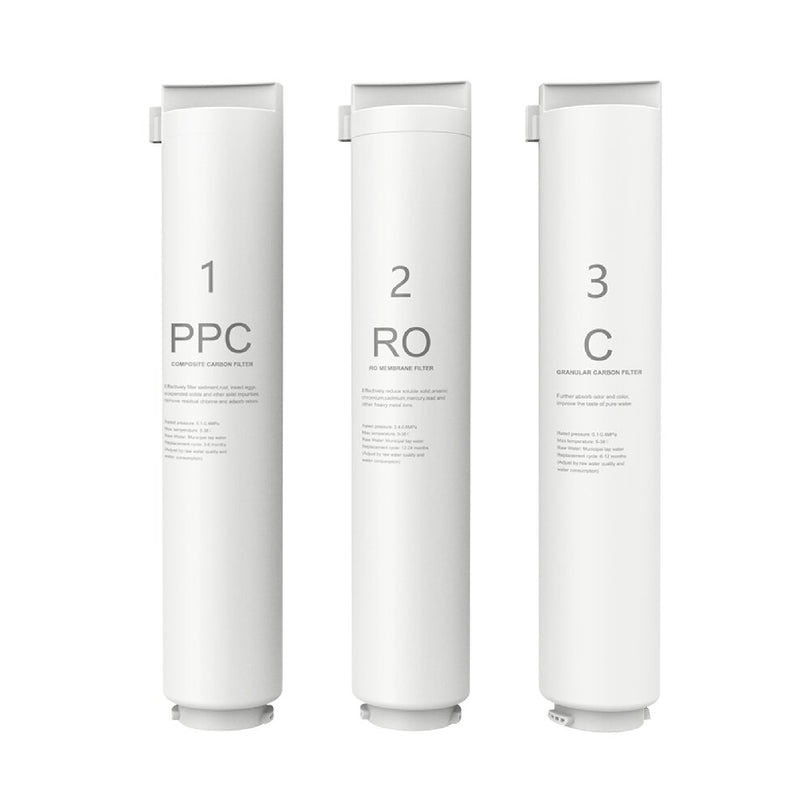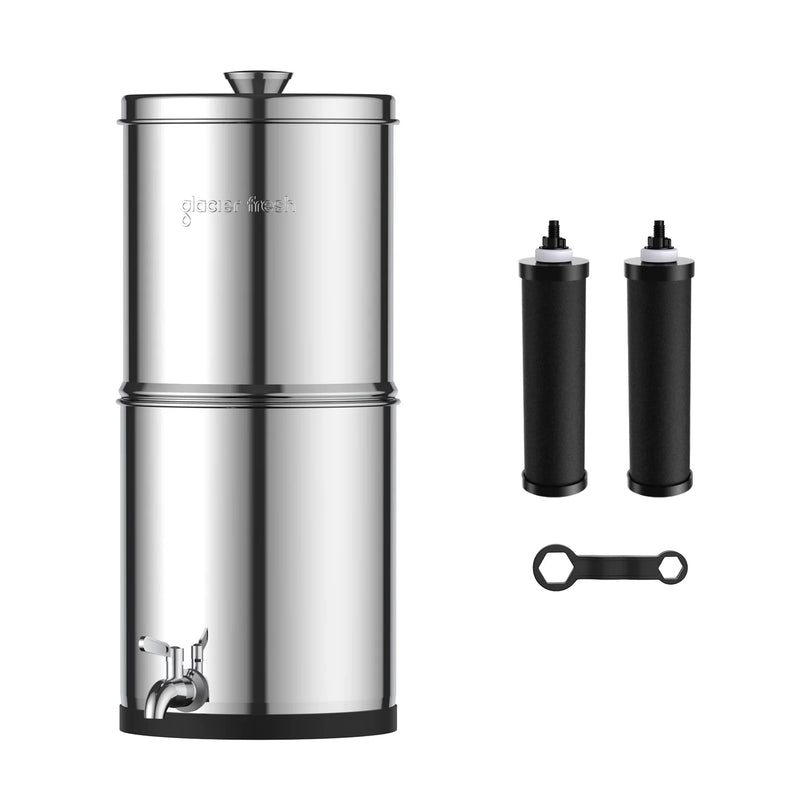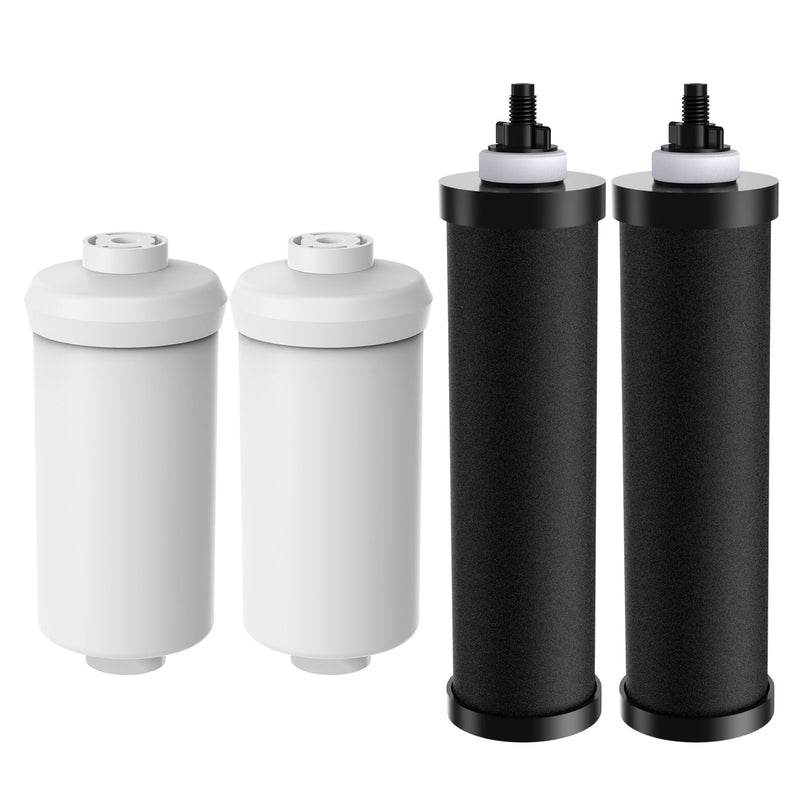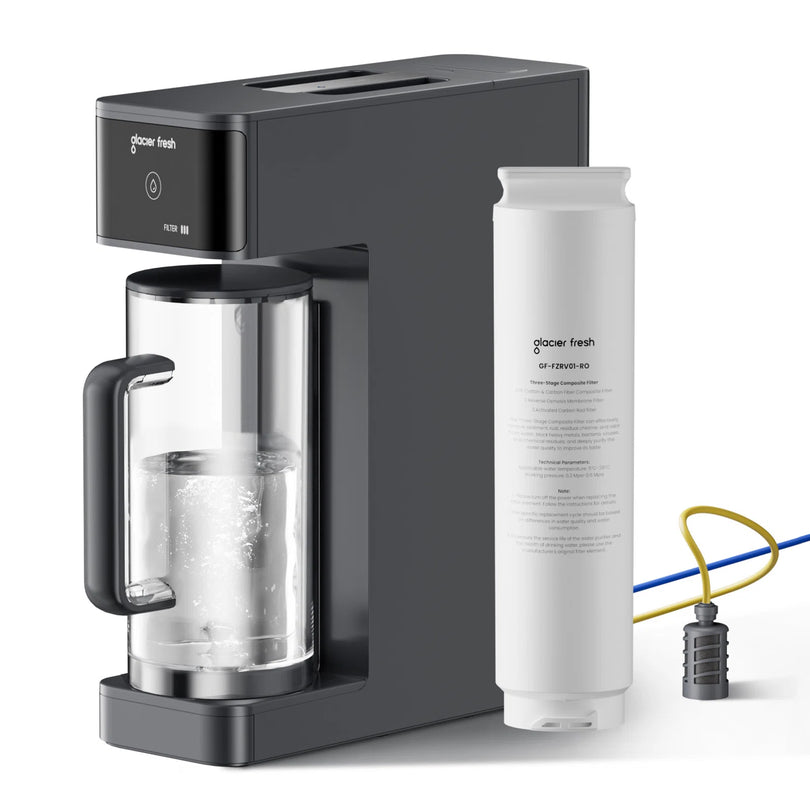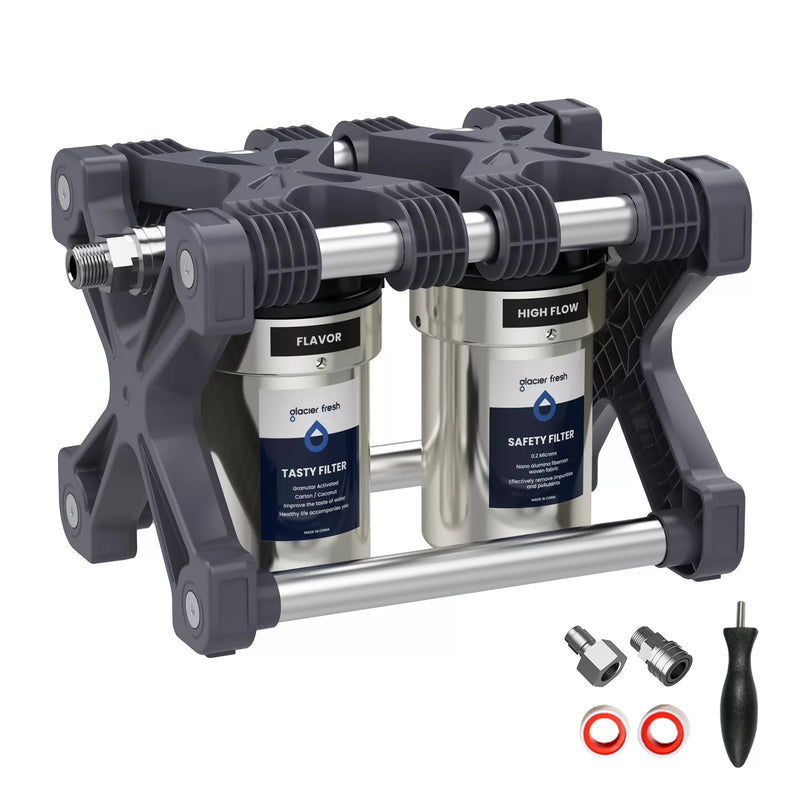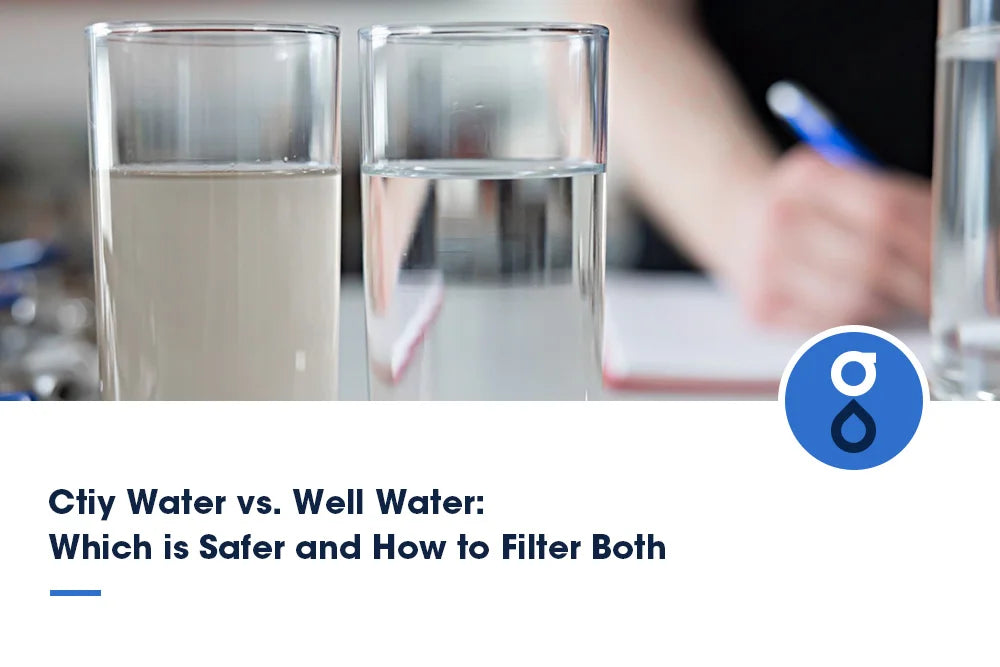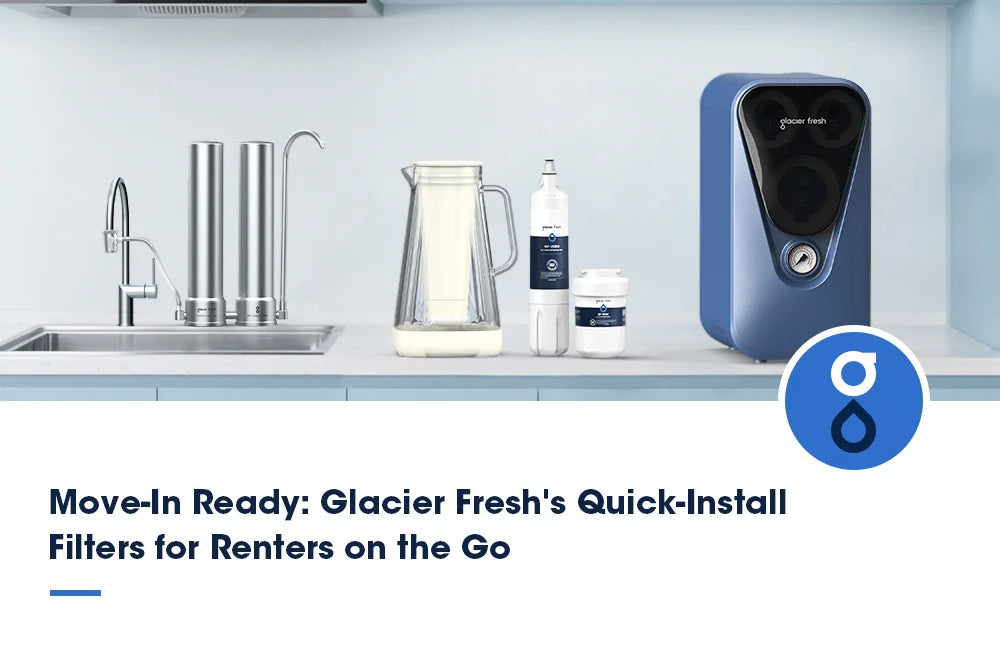Table of Contents:
Understanding the basics: what is city water and well water?
Common contaminants in city water and well water
City water vs. well water: safety comparison
How to filter both types of water effectively?
Tips for choosing the right water filter system
Conclusion
Have you ever wondered if the water flowing from your faucet is safe to drink? Whether your home relies on city water or well water, understanding the differences between the two—and how to filter them properly—can make a big difference to your health and peace of mind.
In this post, we’ll explain what distinguishes city and well water, explore their safety profiles and offer guidance on how to filter each one for the cleanest, healthiest water possible.
Understanding the basics: what is city water and well water?
 City water, also known as municipal water, is supplied by a public water system. It usually comes from surface sources like lakes, rivers, or reservoirs. Before it reaches your home, it’s treated at a central facility, where it undergoes chlorination, filtration, and fluoridation processes.
City water, also known as municipal water, is supplied by a public water system. It usually comes from surface sources like lakes, rivers, or reservoirs. Before it reaches your home, it’s treated at a central facility, where it undergoes chlorination, filtration, and fluoridation processes.
- Source & treatment: City water is derived from surface water bodies (lakes, rivers, reservoirs) and treated at centralized facilities using processes such as coagulation, sedimentation, filtration, and disinfection (commonly with chlorine or chloramine).
- Regulatory oversight: It is governed by strict EPA standards and regularly tested to meet federal quality guidelines.
- Advantages & limitations: Consistent quality and centralized monitoring ensure safety, though contaminants can still enter through aging infrastructure.
Well water is groundwater accessed via a private well on your property. Unlike city water, it doesn’t go through any government treatment facilities, so the homeowner is entirely responsible for its safety.
- Source & management: Well water is sourced directly from underground aquifers via private wells and bypasses municipal treatment. Homeowners must independently test and manage water quality.
- Regulation & control: Lacking EPA oversight, well water safety depends on regular, independent testing and maintenance.
- Advantages & risks: While often naturally soft and free of chemical additives (like chlorine), it is more susceptible to localized contamination—from bacteria to naturally occurring minerals.
Common contaminants in city water and well water
Each water source has its potential contaminants, depending on geography, environmental factors, and infrastructure.
City water contaminants:
- Chemical residues: Chlorine, chloramine, and fluoride added during treatment may leave residual traces.
- Heavy metals: Aging pipes can release lead and copper into the supply.
- Byproducts: Disinfection processes may result in harmful byproducts (e.g., trihalomethanes) under certain conditions.
- Emerging contaminants: Low-level pharmaceuticals and industrial chemicals that slip through standard treatment.
Well water contaminants:
- Microbial pathogens: Bacteria (such as E. coli), viruses, and protozoa can infiltrate from septic systems or surface runoff.
- Nutrients & chemicals: Nitrates from fertilizer use and pesticides from nearby agricultural activities.
- Natural elements: Elevated levels of arsenic, iron, manganese, and sulfur naturally occurring in some regions.
- Seasonal variations: Local weather, flooding, or drought can dramatically alter contaminant levels.
City water vs. well water: safety comparison

Both water sources can be safe—or unsafe—depending on how they’re managed.
City water is regulated by the Environmental Protection Agency (EPA) and tested regularly to meet federal standards. However, contamination can still occur, particularly from old infrastructure or localized events like pipe corrosion or treatment failures.
Well water is not regulated by the EPA, so the homeowner is entirely responsible for testing and treating it. This can make well water riskier if not properly monitored, but it also means you have control over what goes into your water.
City water is inherently designed to meet health standards through centralized regulation. Conversely, well water safety hinges entirely on the homeowner’s diligence in testing and treatment. With the right safeguards, both sources can be safe for consumption.
How to filter both types of water effectively?
 Effective filtration targets the specific contaminants associated with each water source.
Effective filtration targets the specific contaminants associated with each water source.
For city water:
- Activated carbon filters: Remove chlorine, disinfection byproducts, and many volatile organic compounds (VOCs), improving taste and odor.
- Reverse osmosis (RO) systems: Effective for reducing heavy metals, fluoride, and residual chemicals.
- Whole-house systems: Provide comprehensive filtration, minimizing sediment and chemical residues at the entry.
For well water:
- Water testing first: Identify the exact contaminants before selecting a treatment method.
- Ultraviolet (UV) purifiers: Eliminate bacteria, viruses, and other microbial threats.
- Specialty filters: Use iron filters, water softeners, or reverse osmosis units to address minerals, nitrates, and other dissolved contaminants.
- Multi-stage systems: Combine sediment filtration, activated carbon, and UV or RO treatments for robust defense.
Tips for choosing the right water filter system
- Test your water: Know what you’re dealing with—test kits or lab analysis help identify key contaminants.
- Match the filter to the problem: Each filter targets different contaminants.
- Look for certifications: NSF/ANSI-certified filters are independently tested for performance.
- Consider maintenance: Choose a system you can realistically maintain—some require frequent cartridge changes or periodic cleaning.
- Think long-term: Weigh upfront costs vs. ongoing maintenance and replacement filter expenses.
Conclusion
Both city and well water have their own benefits and risks. City water benefits from government oversight but can still carry unwanted chemicals. Well water offers more independence but requires proactive testing and treatment. The good news? You can protect your household either way by choosing the right filtration system.
Clean, safe water starts with awareness and action. Whether connected to a municipal supply or drawing from a private well, filtering your water gives you control—and peace of mind. Follow Glacier Fresh to find more water filtration solutions.

